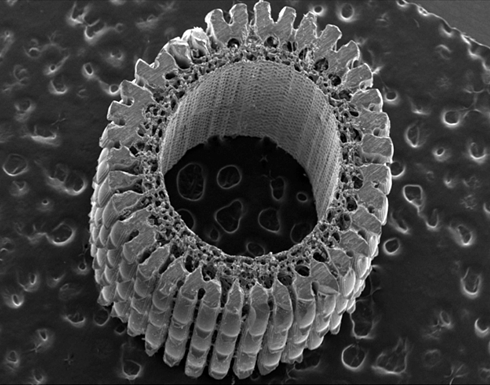
|
Published: 15 October 2012
Sea urchin’s spines a clue to lighter, stronger materials?
Just as engineers took an idea from nature – the small flexible hooks on burrs that attach to fluffy surfaces – to invent Velcro, the modelling of the micro-mechanics of a sea urchin’s spine by a team of Australian engineers could lead to a new generation of bio-inspired materials with improved strength-to-weight efficiency.
The purple-spined sea urchin (Centrostephanus rodgersii) – found in tidal waters along the coast of New South Wales – uses long spines extending from its body for walking, sensing its environment, and protection against predators and rough surf.
In a study published in the peer-reviewed journal PLOS ONE, researchers from the University of New South Wales and the Australian National University explain how the unique and intricate structure of the sea urchin’s spine enables an advantageous blend of elasticity and brittleness.
This combination allows the spine to better absorb impacts and stress under some conditions, and snap off under others.
In addition to offering new insights into this curious marine animal, these findings could offer clues for creating new bio-inspired materials and more efficient engineering designs, which often strive to improve strength-to-weight efficiency.
The sea urchin’s spine strength is particularly interesting given the brittleness of its constituent materials, says lead author Dr Naomi Tsafnat from the UNSW’s School of Mechanical and Manufacturing Engineering.
‘The spine is both strong and lightweight, and has mechanical characteristics that suit the sea urchin’s needs,’ she says.
‘It can withstand some types of loads, like compression, which allows the sea urchin to manoeuver and walk around, but snaps easily when the urchin needs to protect itself from predators.’
Using a process known as microtomography, the researchers created a high-resolution 3D microscopic image of a segment of spine. This allowed them to identify unique features in its architecture, such as the protruding wedges and barbs on the surface that are linked together by tiny bridging structures that spiral around the spine’s axis.
The team used this 3D image to create a computer model of the spine segment, and then simulated various mechanical load scenarios.
Different types of stress concentrate at different points within the architecture, contributing greatly to the spine’s strength and unusual elasticity under certain strains.
Source: University of New South Wales




